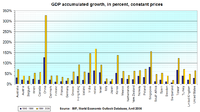
Photo from wikipedia
Abstract Microplastic (MP) pollution is a threat to environments around the world and mosquitoes are particularly affected because of their high chance of encountering MP as larvae. Mosquitoes have been… Click to show full abstract
Abstract Microplastic (MP) pollution is a threat to environments around the world and mosquitoes are particularly affected because of their high chance of encountering MP as larvae. Mosquitoes have been shown to readily consume microplastics and they have a significant impact on health in society, yet we have limited knowledge on the effects of MP exposure on fitness-related traits. Additionally, the data we do have come primarily from studies that have used unrealistically high microplastic concentrations, or unrealistic methods of exposure. Here we exposed wild-type first instar Culex pipiens and Culex tarsalis larvae to two 4.8–5.8 µm polystyrene microplastic concentrations (0 particles/ml, 200 particles/ml, 20,000 particles/ml) to evaluate the effect of MP exposure on body size, development, and growth rate. We found no effect of microplastics on any of the traits in either species. These results indicate microplastic exposures comparable to levels found in nature have minimal effects on these fitness-related traits. Future directions for this work include examining whether the effects of MP exposure are exacerbated when evaluated in combination with other common stressors, such as warming temperatures, pesticides, and food limitation.
Journal Title: Journal of Medical Entomology
Year Published: 2023
Link to full text (if available)
Share on Social Media: Sign Up to like & get
recommendations!